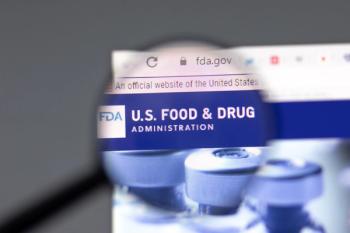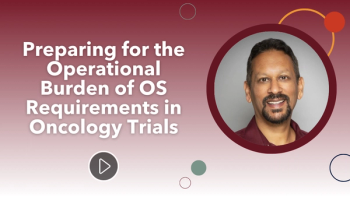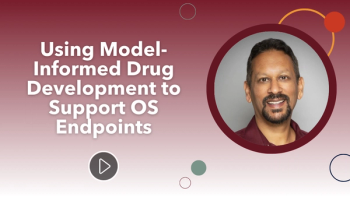
- Applied Clinical Trials-10-01-2010
- Volume 0
- Issue 0
Hope Rises for Safety Law
Pharmacists and patient groups welcome the new European Union directive on pharmacovigilance.
The new European Union directive on pharmacovigilance is likely to be fully implemented by late 2010 or early 2011, and expectations that it will help to contribute to a much improved climate for drug safety appear to be growing.
Several serious public health disasters—from thalidomide in the 1960s to the recall of rofecoxib (Vioxx) in 2004—have provided reminders that effective pharmacovigilance is vital for protecting the public. These events have led to a protracted discussion of how best to revise the regulations, and the process is now approaching completion.
Pharmacists and patient groups seem happy with the likely outcome. They welcomed the new directive at an event held on September 15, 2010 at the European Parliament. In a statement, they said that it is an opportunity for pharmacists and patients to work more effectively together to improve medication safety.
The meeting was organized jointly by the Pharmaceutical Group of the EU (PGEU) and the European Patients' Forum (EPF) and sponsored by the pharmacovigilance rapporteur, Linda McAvan, a member of the European Parliament.
The new directive proposes a stronger reporting framework for pharmacists and health professionals, and introduces direct reporting by patients. The data gathered from such reports will be used to monitor risks posed by medicines once they have been approved and become available to patients.
Three-quarters of medicines are prescribed and dispensed in primary care, and pharmacists often come into contact with groups who do not take part extensively in clinical trials (e.g., children, the elderly, and those taking a number of medicines simultaneously), according to PGEU President Filip Babylon. Therefore, pharmacists have a key role in reporting adverse drug reactions (ADRs) and helping patients to understand their importance.
"We welcome the proposals regarding direct patient reporting and giving patients wider access to safety data, as this contributes to patients' empowerment and greater patient safety," said EPF President Anders Olauson. "These efforts should be seen as integral to the wider EU debate on patient empowerment and health literacy, with the aim of enhancing the safety and quality of care for all patients."
The PGEU represents community pharmacists, while the EPF is the umbrella group of European patient organizations active in the field of European public health and health advocacy.
McAvan estimated that 5 percent of hospital admissions are due to ADRs. She supported an EU-wide system that allows creation of a wider pool of knowledge on ADRs that can detect patterns earlier and avoid duplication. Nevertheless, she emphasized that ADRs must be reported more quickly, particularly by member states (about half of member states report late compared to 5 percent of pharmaceutical companies). She noted that transparency is the key, and welcomed the idea of a European Medicines Agency web portal and public hearings on ADRs that are open to the public. However, according to McCavan, the database should not be open to the public because it is too technical.
Under the directive, member states must facilitate direct patient reporting through the provision of alternative reporting formats, in addition to web-based formats. They must ensure the public receives important information in good time on pharmacovigilance concerns relating to the use of a medicinal products through publication on the web portal and through other means. They should also ensure any biological medicinal product prescribed, dispensed, or sold in their territory that is the subject of a report on a suspected adverse reaction is identifiable by, where available, the name of the Market Authorization Holder, the International Nonproprietary Name, and the name of the medicinal product and the batch number. Standard forms and procedures complying with Regulation (EC) No 726/2004 should be used and account must be taken of the EudraVigilance system.
The European Parliament voted in favor of the directive on September 22, 2010. For the latest information about the status of the directive visit:
It is also important to be aware of EudraVigilance, a data processing network and management system for reporting and evaluating suspected ADRs during the development, and following the marketing authorization, of medicinal products in the European Economic Area. The EudraVigilance helpline can be reached by phone at +44 (0)20 7523 7523 or by e-mail at
Articles in this issue
about 15 years ago
Pain Drugs: A Diverse Fieldabout 15 years ago
Improve the Business of Scienceabout 15 years ago
Business and News Update October 2010about 15 years ago
Act coverabout 15 years ago
Conducting Clinical Trials Beyond Europeabout 15 years ago
Sponsors Cope with New Sunshine Act Rulesabout 15 years ago
A Learning Health Care System: One Giant Leapabout 15 years ago
Clinical Grants Expenditures are on the Rise Throughout the Worldabout 15 years ago
Waive Inclusion and Exclusion Criteria?about 15 years ago
Implications of Physician Payment ActNewsletter
Stay current in clinical research with Applied Clinical Trials, providing expert insights, regulatory updates, and practical strategies for successful clinical trial design and execution.






.png)



.png)



.png)
.png)
